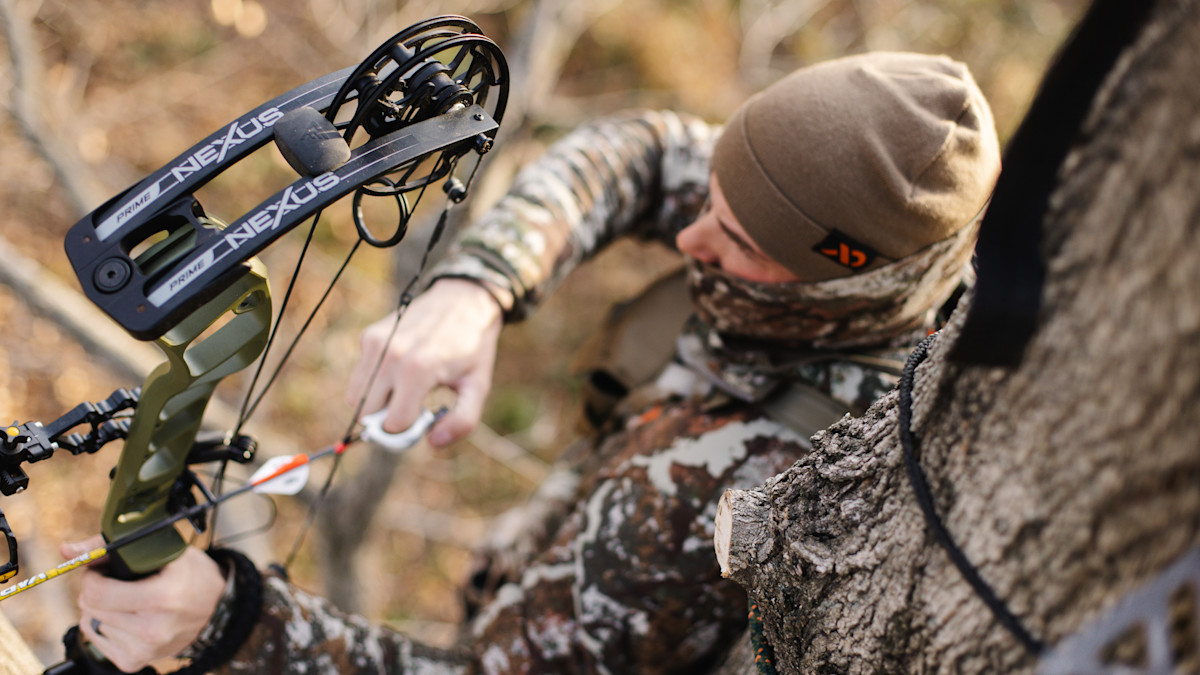
There is so much that can be argued over in the world of bowhunting whitetails. Fast arrows vs. energy-laden heavy shafts. Mechanicals vs. fixed-blades. Single-bevel vs. double-bevel.
There’s one thing that can’t be argued: There is nothing that makes more of a difference in the quick, efficient killing of a critter than shot placement. Truth be told, you can drill a field point into both lungs of the biggest whitetail and that deer will tip over in short order. Shot placement is the key regardless of what bow you shoot, what your arrow weighs, what broadhead you choose, or how sick you look in your “kit.” Put the arrow in the right spot, and it’ll do the rest.
It is for this reason that I simply will not take shots longer than 30 yards unless I have to. For me, long-range shots are almost always limited to a follow-up shot on a deer I’ve already put an arrow into.
I’m sure the Total Archery Challenge, with its super-long shots and extreme terrain is a fun game but, in my opinion, it has almost nothing to do with bowhunting in the real world. Hitting a stationary target at 90 yards is much different than hitting a live deer at 50 yards. That deer can—and almost certainly will—move when it hears the bow go off or the arrow whistling through the air. And, regardless of how fast your bow is, it’s not fast enough to compensate for the unpredictable movement of a live animal.
Now, I wouldn’t consider myself an above-average shot with a bow. At a distance of 30 yards or less, I’m not in complete control of where the arrow impacts the deer should it decide to move. That being said, I’m in a much more favorable position than if the arrow had to travel twice the distance to its target. At 30 yards or less, I can factor in the potential movement of an animal that’s “jumping the string” by aiming at the lower third of the deer.
Let’s do a little math. An arrow traveling 350 feet-per-second (fps) takes roughly one second to travel 116 yards. Divide that in half and you get roughly half of a second to cover 58 yards. Of course, that would mean the arrow must maintain that 350 fps speed throughout the course of its flight. It doesn’t. Depending on your broadhead and fletching setup, the arrow is going to lose varying amounts of speed. Also, most hunting rigs aren’t slinging arrows at 350 fps. So, let’s be generous and say it’ll take 1.5 seconds for the arrow to reach its target at 80 yards.
The next time you’re out scouting for deer, find one that’s on the move. Grab your cell phone and open the clock app. Hit the stopwatch and see how far a deer can travel in 1.5 seconds.
Keeping shots at less than 30 yards makes everything simpler and more effective. I can get away with a single pin on my sight if I wanted. In fact, I set my bows up to be dead-on at 25 yards with my primary sight pin. This means I can use the same pin for distances from 20 to 30 yards and hold right on with minimal variation in the point of impact.
If I happen to misjudge yardage and don’t have time to use a rangefinder, I know I’m still in a great position. Again, at longer distances, misjudged yardages have a much bigger impact, and a missed shot is the best outcome when things go wrong.
To make another point, isn’t the goal of bowhunting to effectively close the distance between you and your target? If we’re launching shots at 50 or even 60 yards, we’re not only increasing the likelihood of missing (or worse, wounding) our target, but we’re also tip-toeing away from the spirit of archery. It’s a less-effective weapon than firearms, which means we need to use our experience and skills to put us at an advantage—namely, shorter distances. Sure, it’s ethical, but it’s also more fun, at least in my opinion.
I fully expect there are plenty of folks reading this who will heartily disagree. There’s a growing movement of archers who pride themselves on how accurately they can hit their target at long range, and they may well be able to do so. But, is it worth the risk? Is it worth the heartache of watching your trophy run away? I know there will be plenty of shots taken this fall at deer far beyond 30 yards. I can’t argue with that fact. But there’s also no argument to this: I won’t be one taking those shots.




